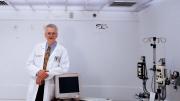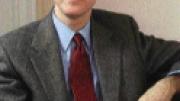Not long ago, a psychiatrist in private practice telephoned associate professor of psychiatry Robert Stickgold, a cognitive neuroscientist specializing in sleep research. He asked whether Stickgold knew of any reason not to prescribe modafinil, a new wakefulness-promoting drug, to a Harvard undergraduate facing a lot of academic work in exam period.
The question resonated on several levels. Used as an aid to prolonged study, modafinil is tantamount to a “performance-enhancing” drug—one of those controversial, and often illegal, boosters used by some athletes. In contrast to wakefulness-producing stimulants like amphetamines, modafinil (medically indicated for narcolepsy and tiredness secondary to multiple sclerosis and depression) does not seem to impair judgment or produce jitters. “There’s no buzz, no crash, and it’s not clear that the body tries to make up the lost sleep,” reports Stickgold. “That said, all sleeping medications more or less derange your normal sleep patterns. They do not produce normal sleep.” Even so, the U.S. military is sinking millions of dollars into research on modafinil, trying to see if they can keep soldiers awake and on duty—in Iraq, for example—for 80 out of 88 hours: two 40-hour shifts separated by eight hours of sleep.
“No—no reason at all not to,” Stickgold told the psychiatrist. “Not unless you think sleep does something.”
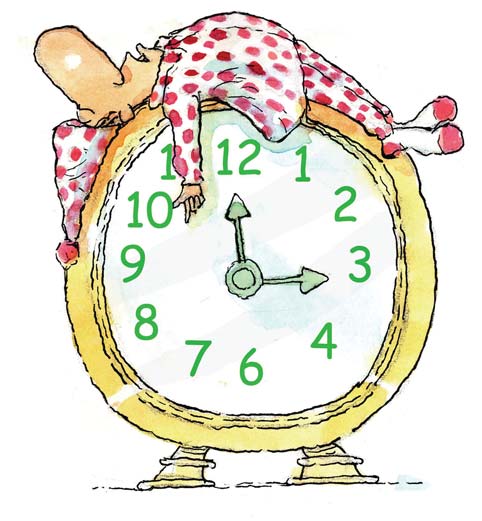
Illustration by Tom Mosser
When people make the unlikely claim that they get by on four hours of sleep per night, Stickgold often asks if they worry about what they are losing. “You get a blank look,” he says. “They think that sleep is wasted time.” But sleep is not merely “down time” between episodes of being alive. Within an evolutionary framework, the simple fact that we spend about a third of our lives asleep suggests that sleep is more than a necessary evil. Much transpires while we are asleep, and the question is no longer whether sleep does something, but exactly what it does. Lack of sleep may be related to obesity, diabetes, immune-system dysfunction, and many illnesses, as well as to safety issues such as car accidents and medical errors, plus impaired job performance and productivity in many other activities.
Although the modern era of sleep research started in the 1950s with the discovery of REM (Rapid Eye Movement) sleep, the field remained, well, somnolent until recently. Even 20 years ago, “The dominant paradigm in sleep research was that ‘Sleep cures sleepiness,’” says Stickgold. Since then, researchers have developed a far more complex picture of what happens while we snooze. The annual meetings in sleep medicine, which only this year became a recognized medical specialty, now draw 5,000 participants. Harvard has long been a leader in the area. The Medical School’s Division of Sleep Medicine, founded in 1997 and chaired by Baldino professor of sleep medicine Charles Czeisler, has 61 faculty affiliates. The division aims to foster collaborative research into sleep, sleep disorders, and circadian biology, to educate physicians and the lay public, to influence public policy, and to set new standards of clinical practice, aiming, as its website (www.hms.harvard.edu/sleep) declares, to create “a model program in sleep and circadian biology.”
A Culture of “Sleep Bulimia”
Imagine going on a camping trip without flashlights or lanterns. As the sun sets at the end of the day, daylight gradually gives way to darkness, and once the campfire burns down, you will probably go to sleep. At sunrise, there’s a similar gradient in reverse; from the beginning of time, human beings have been entrained to these cycles of light and dark.
Homo sapiens is not a nocturnal animal; we don’t have good night vision and are not especially effective in darkness. Yet in an instant on the evolutionary time scale, Edison’s invention of the light bulb, and his opening of the first round-the-clock power plant on Pearl Street in Manhattan in 1882, shifted our time-and-light environment in the nocturnal direction. At the snap of a switch, a whole range of nighttime activity opened up, and today we live in a 24-hour world that is always available for work or play. Television and telephones never shut down; the Internet allows you to shop, gamble, work, or flirt at 3 a.m.; businesses stay open ever-longer hours; tens of millions of travelers cross multiple time zones each year, worldwide; and with the growth of global commerce and communication, Wall Street traders may need to rise early or stay up late to keep abreast of developments on Japan’s Nikkei exchange or at the Deutsche Bundesbank.
Consequently most of us now sleep less than people did a century ago, or even 50 years ago. The National Sleep Foundation’s 2005 poll showed adult Americans averaging 6.8 hours of sleep on weeknights—more than an hour less than they need, Czeisler says. Not only how much sleep, but when people sleep has changed. In the United States, six to eight million shift workers toil regularly at night, disrupting sleep patterns in ways that are not necessarily amenable to adaptation. Many people get only five hours per night during the week and then try to catch up by logging nine hours nightly on weekends. “You can make up for acute sleep deprivation,” says David P. White, McGinness professor of sleep medicine and director of the sleep disorders program at Brigham and Women’s Hospital. “But we don’t know what happens when people are chronically sleep-deprived over years.”
“We are living in the middle of history’s greatest experiment in sleep deprivation and we are all a part of that experiment,” says Stickgold. “It’s not inconceivable to me that we will discover that there are major social, economic, and health consequences to that experiment. Sleep deprivation doesn’t have any good side effects.”
All animals sleep. Fish that need to keep swimming to breathe sleep with half their brains while the other half keeps them moving. It is uncertain whether fruit flies actually sleep (“We can’t put electrodes in their brains,” says White), but they seem at least to rest, because for extended periods they do not move. When researchers stopped fruit flies from resting by swatting at them, the flies took even longer rest periods. When lab technicians added caffeine to the water that the flies drank, they stayed active longer—and also rested longer after the drug wore off, evidence that the caffeine had disrupted their resting patterns.
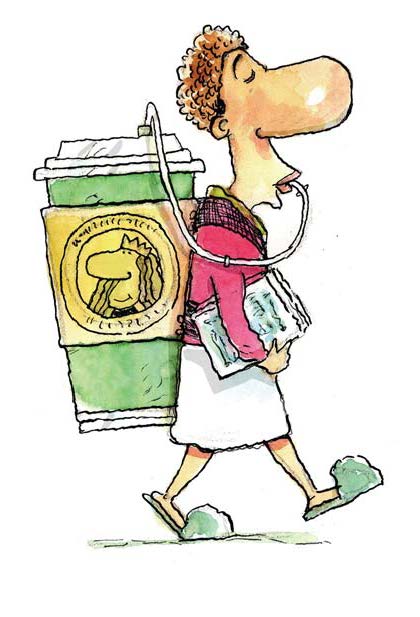
Illustration by Tom Mosser
Sleeping well helps keep you alive longer. Among humans, death from all causes is lowest among adults who get seven to eight hours of sleep nightly, and significantly higher among those who sleep less than seven or more than nine hours. (“Those who sleep more than nine hours have something wrong with them that may be causing the heavy sleep, and leads to their demise,” White notes. “It is not the sleep itself that is harmful.”)
Sleep is essential to normal biological function. “The immune system doesn’t work well if we don’t sleep,” says White. “Most think sleep serves some neurological process to maintain homeostasis in the brain.” Rats totally deprived of sleep die in 17 to 20 days: their hair starts falling out, and they become hypermetabolic, burning lots of calories while just standing still.
There once was a fair amount of research on total sleep deprivation, like that which killed the rats. Doctors would keep humans awake for 48, 72, or even 96 hours, and watch their performance deteriorate while their mental states devolved into psychosis. For several reasons, such studies rarely happen any more (“Why study something that doesn’t exist?” asks White) and researchers now concentrate on sleep restriction studies.
In this context, it is important to distinguish between acute and chronic sleep deprivation. Someone who misses an entire night of sleep but then gets adequate sleep on the following three days “will recover most of his or her normal ability to function, ” Czeisler says. “But someone restricted to only five hours of nightly sleep for weeks builds up a cumulative sleep deficit. In the first place, their performance will be as impaired as if they had been up all night. Secondly, it will take two to three weeks of extra nightly sleep before they return to baseline performance. Chronic sleep deprivation’s impact takes much longer to build up, and it also takes much longer to recover.” The body is eager to restore the balance; Harvard undergraduates, a high-achieving, sleep-deprived population, frequently go home for Christmas vacation and pretty much sleep for the first week. Stickgold notes that “When you live on four hours a night, you forget what it’s like to really be awake.”
Sleep researcher Eve van Cauter at the University of Chicago exposed sleep-deprived students (allowed only four hours per night for six nights) to flu vaccine; their immune systems produced only half the normal number of antibodies in response to the viral challenge. Levels of cortisol (a hormone associated with stress) rose, and the sympathetic nervous system became active, raising heart rates and blood pressure. The subjects also showed insulin resistance, a pre-diabetic condition that affects glucose tolerance and produces weight gain. “[When] restricted to four hours [of sleep] a night, within a couple of weeks, you could make an 18-year-old look like a 60-year-old in terms of their ability to metabolize glucose,” Czeisler notes. “The sleep-deprived metabolic syndrome might increase carbohydrate cravings and the craving for junk food.”
Van Cauter also showed that sleep-deprived subjects had reduced levels of leptin, a molecule secreted by fat cells that acts in the brain to inhibit appetite. “During nights of sleep deprivation, you feel that your eating goes wacky,” says Stickgold. “Up at 2 a.m., working on a paper, a steak or pasta is not very attractive. You’ll grab the candy bar instead. It probably has to do with the glucose regulation going off. It could be that a good chunk of our epidemic of obesity is actually an epidemic of sleep deprivation.”
Furthermore, “Many children in our society don’t get adequate amounts of sleep,” Czeisler says. “Contrary to what one might expect, it’s common to see irritability and hyperactivity in sleep-deprived children. Is it really surprising that we treat them with wake-promoting drugs like Ritalin?” Schools and athletic programs press children to stay awake longer, and some children may be chronically sleep-deprived. Czeisler once took his daughter to a swim-team practice that ran from eight to nine o’clock at night, and told the coaches that this was too late an hour for children. “They looked at me like I was from another planet,” he recalls. “They said, ‘This is when we can get the pool.’”
Stickgold compares sleep deprivation to eating disorders. “Twenty years ago, bulimics probably thought they had the best of all worlds,” he says. “They could eat all they wanted and never gain weight. Now we know that they were and are doing major damage to their bodies and suffering major psychological damage. We live in a world of sleep bulimia, where we binge on weekends and purge during the week.”
The Fatigue Tax
Lack of sleep impairs performance on a wide variety of tasks. A single all-nighter can triple reaction time and vastly increase lapses of attention. Sleep researcher David Dinges at the University of Pennsylvania studied such lapses using a “psychomotor vigilance task” on pools of subjects who had slept four, six, or eight hours nightly for two weeks. The researchers measured subjects’ speed of reaction to a computer screen where, at random intervals within a defined 10-minute period, the display would begin counting up in milliseconds from 000 to one second. The task was first, to notice that the count had started, and second, to stop it as quickly as possible by hitting a key. It wasn’t so much that the sleep-deprived subjects were slower, but that they had far more total lapses, letting the entire second go by without responding. Those on four hours a night had more lapses than those sleeping six, who in turn had more lapses than subjects sleeping eight hours per night. “The number of lapses went up and up for the whole two weeks,” says David White, “and they hadn’t plateaued at the end of the two-week study!”
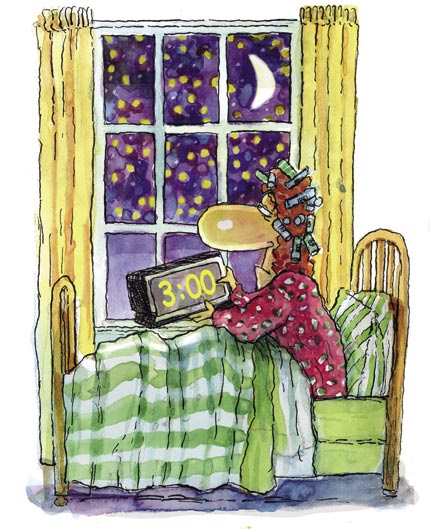
Illustration by Tom Mosser
There’s fairly large individual variation in susceptibility to the cognitive effects of sleep deprivation: in one of Charles Czeisler’s studies, somewhere between a quarter and a third of the subjects who stayed awake all night contributed two-thirds of the lapses of attention. “Some are more resistant to the impact of a single night of sleep loss,” he says. “But they all fall apart after two nights without sleep.” In a sleep-deprived state, says White, “Most of us can perform at a fairly low level. And a lot can run around sleep-deprived without it being obvious. But truck drivers, neurosurgeons, nuclear-plant workers—after six or eight hours, they have to put a second crew on and give them a break.” Very few people are really immune to sleep deprivation: in Dinges’s study, only one of 48 subjects had the same performance after two weeks of four hours’ nightly sleep as on day one.
Students often wonder whether to pull an all-nighter before an exam. Will the extra studying time outweigh the exhaustion? Robert Stickgold, who has studied sleep’s role in cognition for the past 10 years, reports that it depends on the exam. “If you are just trying to remember simple facts—listing all the kings of England, say—cramming all night works, ” he explains. “That’s because it’s a different memory system, the declarative memory system. But if you expect to be hit with a question like ‘Relate the French Revolution to the Industrial Revolution,’ where you have to synthesize connections between facts, then missing that night of sleep can be disastrous. Your ability to do critical thinking takes a massive hit—just as with alcohol, you’re knocking out the frontal-cortex functions.
“It’s a version of ‘sleeping on a problem,’” Stickgold continues. “If you can’t recall a phone number, you don’t say, ‘Let me sleep on it.’ But if you can’t decide whether to take a better-paying job located halfway across the country—where you have all the information and just have to weigh it—you say, ‘Let me sleep on it.’ You don’t say, ‘Give me 24 hours.’ We realize that it’s not just time; we understand at a gut level that the brain is doing this integration of information as we sleep, all by itself.”
Not only mental and emotional clarification, but the improvement of motor skills can occur while asleep. “Suppose you are trying to learn a passage in a Chopin piano étude, and you just can’t get it,” says Stickgold. “You walk away and the next day, the first try, you’ve got it perfectly. We see this with musicians, and with gymnasts. There’s something about learning motor-activity patterns, complex movements: they seem to get better by themselves, overnight.”
Stickgold’s colleague Matthew Walker, an instructor in psychiatry, studied a simple motor task: typing the sequence “41324” as rapidly and accurately as possible. After 12 minutes of training, subjects improved their speed by 50 to 60 percent, but then reached a plateau. Those who trained in the morning and came back for another trial the same evening showed no improvement. But those who trained in the evening and returned for a retest the following morning were 15 to 20 percent faster and 30 to 50 percent more accurate. “Twenty percent improvement—what’s that?” asks Stickgold, rhetorically. “Well, it’s taking a four-minute mile down to three minutes and 10 seconds, or raising a five-foot high jump to six feet.”
Bodily Rituals
So sleep is essential, but exactly why we go to sleep remains a mystery. Professor of psychiatry Robert McCarley, based at the VA Boston Healthcare System, has linked sleep to the brain neurochemical adenosine. Adenosine binds with phosphorus to create adenosine triphosphate (ATP), a substance that cells break down to generate energy. McCarley and colleagues inserted microcatheters into cat brains while keeping the cats awake for up to six hours—a long time for a cat. They found that rising adenosine levels in the basal forebrain put the cat to sleep; then, in the sleeping cat, adenosine levels fall again. In both cats and humans, the basal forebrain includes cells important for wakefulness, and adenosine turns these cells off, triggering sleep.
Like cats, when we are awake and active, we burn ATP, which breaks down to adenosine. Over time, adenosine levels build up, causing pressure for sleep. During sleep, many of the body’s cells are less active and hence burn less ATP, so adenosine levels fall again, setting the stage for wakefulness.
A drug like caffeine, however, partially blocks adenosine receptors, so the brain doesn’t perceive the actual adenosine level, and we don’t get tired. In a world that values wakefulness and productivity over rest and recovery, caffeine has become, in dollar amounts, the second-largest commodity (after oil) traded in the world. Some consumers require ever-greater jolts—one 24-ounce Starbucks beverage packs a walloping 1,000-plus milligrams of caffeine. (A commonly used figure for one cup of coffee is 100 milligrams.)
The lab run by Putnam professor of neurology Clifford Saper has done related research, refining the location and functions of the “sleep switch,” a group of nerve cells in the hypothalamus that turns off the brain’s waking systems; conversely, the waking systems can turn off the sleep switch. “When you have a switch where either side can turn off the other, it’s what electrical engineers call a ‘flip-flop,’” Saper explains. “It likes to be in one state or the other. So we fall asleep, or wake up, quite quickly. Otherwise we’d be half asleep or half awake all the time, with only brief periods of being fully awake or asleep. But we’re not—we are either awake or asleep.”
The adenosine cycle at least partly explains the homeostatic drive for sleep—the longer we are awake, the greater our fatigue, and pressure to sleep builds up progressively. But circadian rhythms also profoundly affect sleep and wakefulness. Circadian cycles (from circa, meaning “about,” and dies, a “day”) are internal periodic rhythms that control many things like body temperature, hormone levels, sleep and wakefulness, digestion, and excretion. “The circadian cycles go way back in evolutionary time,” Charles Czeisler says. “They are probably older than sleep.”
Since the 1970s, Czeisler has established himself as one of the world’s leading authorities on circadian cycles and the chronobiology of sleep and wakefulness. He has done groundbreaking work in the sleep laboratory at Brigham and Women’s Hospital, where a special wing on one floor is shielded not only from sunlight, but from all external time cues. There, researchers can do exotic things like simulate the 708-hour lunar day or conditions on the International Space Station, where the sun rises and sets every 90 minutes. (Czeisler leads a sleep and chronobiology team that, under the auspices of NASA, researches human factors involved in space travel.)
Exotic light environments like space challenge human biology, partly because people differ from other mammals, which take short catnaps and rat naps throughout the day and night. In contrast, we have one bout of consolidated (unbroken) sleep, and one of consolidated waking, per day (or, in siesta cultures, two of each). In addition, “There is a very narrow window [in the daily cycle] in which we are able to maintain consolidated sleep,” Czeisler says, “and the window gets narrower and narrower as we get older.”
The origins of humans’ consolidated sleep take us to the beginnings of terrestrial life, since even prokaryotes—one-celled organisms like bacteria, lacking a nucleus—have built-in 24-hour rhythms. It is not surprising that these biological clocks are so universal, as they reflect the entrainment of all living things to the primeval 24-hour cycles of light and darkness created by the rotation of Earth.
“The light and dark cycle is the most powerful synchronizer of the internal circadian clock that keeps us in sync with the 24-hour day,” Czeisler says. As late as 1978, when he published a paper demonstrating this effect, many still believed that “social interaction was the most important factor in synchronizing physiological cycles—that we had evolved beyond light,” he says. “But much of our subsequent research shows that our daily cycles are more like those of cockroaches than we want to believe. We are very sensitive to light.”
Light strongly affects the suprachiasmatic nucleus (SCN), a biological clock in the anterior region of the hypothalamus that directs circadian cycles. All cells have internal clocks—even cells in a tissue culture run on 24-hour cycles. “They all oscillate like violins and cellos, but the SCN is the conductor that synchronizes them all together, ” Czeisler explains.
While the homeostatic pressure to sleep starts growing the moment we awaken, the SCN calls a different tune. Late in the afternoon, its circadian signal for wakefulness kicks in. “The circadian system is set up in a beautiful way to override the homeostatic drive for sleep,” Czeisler says. The circadian pacemaker’s signal continues to increase into the night, offsetting the build-up of homeostatic pressure and allowing us to stay awake well into the evening and so achieve our human pattern of consolidated sleep and wakefulness. (There is often a dip in the late afternoon, when the homeostatic drive has been building for hours but the circadian signal hasn’t yet kicked in; Czeisler calls this “a great time for a nap.”) The evolutionary benefit of consolidated sleep and wakefulness is a subject of speculation; Czeisler says that long bouts of wakefulness may enable us to “take advantage of our greater intellectual capacity by focusing our energy and concentration. Frequent catnaps would interrupt that.”
The circadian pacemaker’s push for wakefulness peaks between about 8 and 10 p.m., which makes it very difficult for someone on a typical schedule to fall asleep then. “The period from two to three hours before one’s regular bedtime, we call a ‘wake maintenance zone,’ ” Czeisler says. But about an hour before bedtime, the pineal gland steps up its secretion of the hormone melatonin, which quiets the output from the SCN and hence paves the way for sleep.
Some years ago, melatonin supplements became popular as a natural sleeping pill, but as Czeisler’s research has proven, light is a more powerful influence on the biological clock than melatonin. Mangelsdorf professor of natural sciences J. Woodland Hastings has shown that even a split-second of light exposure can shift the circadian cycle of a single-celled organism by a full hour. Light interferes with sleep, at least partly because it inhibits melatonin secretion and thus resets the biological clock. For this reason, those seeking a sound sleep should probably keep their bedroom as dark as possible and by all means avoid midnight trips to brightly lit bathrooms or kitchens; blue light, with its shorter wavelength—and its resemblance to the sunlit sky—has the most powerful resetting effect.
Light resets the pacemaker even in the case of some completely blind people, who generally lose circadian entrainment and suffer recurrent insomnia. “The eye has two functions, just as the ear does, with hearing and balance,” says Czeisler. “The eye has vision, and also circadian photoreception.” A subset of about 1,000 photosensitive retinal ganglion cells connects by a direct neural pathway to the SCN; these cells are sometimes active even in those who are blind to light. Exposure to bright light will decrease melatonin levels in some blind persons, and this subset, unlike other blind people, generally do not suffer from insomnia and are biologically entrained to the 24-hour day.
Disastrous Exhaustion
The human species, or much of it, anyway, apparently is trying to become simultaneously nocturnal and diurnal. Society has been squeezing the window for restful sleep ever narrower. (Czeisler likes to quote colleague Thomas Roth of the Henry Ford Sleep Disorders Center in Detroit, on the minimal-sleep end of the spectrum. “The percentage of the population who need less than five hours of sleep per night, rounded to a whole number,” says Roth, “is zero.”)
Czeisler has conducted several studies of medical interns, an institutionally sleep-deprived population who provide a hugely disproportionate fraction of the nation’s healthcare services. Interns work famously long 80- and even 100-hour weeks; every other shift is typically 30 hours in duration. “On this kind of schedule, virtually everyone is impaired,” he says. “Being awake more than 24 hours impairs performance as much as having a blood-alcohol level of 0.1 percent—which is legally drunk.”
In addition to both acute and chronic sleep deprivation, interns sleep and wake in patterns that misalign with circadian cycles—being asked, for example, to perform with full alertness at 4 a.m. A fourth factor is that the human brain is “cold” and essentially impaired during the first half-hour after awakening—even more impaired, says Czeisler, than after 70 hours of sleeplessness. “It’s a colossally bad idea to have an intern woken up by a nurse saying, ‘The patient is doing badly—what shall we do?’ ” he says. “They might order 10 times the appropriate dose of the wrong med.”
The intensity and growing technological advance of medical care only enhance the probability of errors under such conditions. Christopher Landrigan, assistant professor of pediatrics, led a study that compared interns working traditional schedules with those on an alternate schedule of fewer weekly hours and no extended (e.g., 30-hour) shifts in intensive-care units. The doctors on the tiring traditional schedule made 36 percent more serious medical errors, including 57 percent more nonintercepted serious errors, and made 5.6 times as many serious diagnostic errors.
Some Harvard-affiliated teaching hospitals, like Brigham and Women’s, where Czeisler works, are taking the lead in substantially reducing work hours for physicians and surgeons in training. Yet no rules limit the work hours of medical students (including those at Harvard Medical School), and at the national level, little has changed for interns and residents. Not long ago, the Accreditation Council of Graduate Medical Education, faced with the threat of federal regulation, enacted new rules limiting extended shifts to 30 hours (before the new rules, they averaged 32 hours), and capped work weeks at 80 hours (beforehand, the average was 72 hours)—with exceptions allowable up to 90 hours. “The new, self-imposed rules largely serve to reinforce the status quo,” Czeisler says. “They haven’t brought about fundamental change, and haven’t changed the length of a typical extended shift, which is still four times as long as a normal workday. And those marathon shifts occur every other shift, all year, several years in a row during residency training.”
The risks don’t end when the doctors leave work. Research fellow in medicine Laura Barger led another group in a nationwide survey of interns that showed them having more than double the risk of a motor-vehicle crash when driving home after an extended shift. (They aren’t alone: 60 percent of American adults drove while drowsy in the past year.)
The moral of much sleep research is startlingly simple. Your mother was right: You’ll get sick, become fat, and won’t work as well if you don’t get a good night’s sleep. So make time for rest and recovery. Stickgold likes to compare two hypothetical people, one sleeping eight hours, the other four. The latter person is awake 20 hours a day, compared to 16 hours for the first. “But if the person on four hours is just 20 percent less efficient while awake, then in 20 hours of waking he or she will get only 16 hours of work done, so it’s a wash,” he says. “Except that they are living on four hours of sleep a night. They’re not gaining anything, but are losing a huge amount: you’ll see it in their health, their social interactions, their ability to learn and think clearly. And I cannot believe they are not losing at least 20 percent in their efficiency.”
Yet instead of encouraging restorative rest, many of our institutions are heading in the opposite direction. This fall, for example, Harvard will begin keeping Lamont Library open 24 hours a day, in response to student demand, and Harvard Dining Services has for several years offered midnight snacks. “These are the wrong solutions,” says Stickgold. “This is like the Boston Police Department getting tired of drunk drivers killing people and setting up coffee urns outside of bars. At Harvard there is no limit on the amount of work students are assigned; you can take four courses and have three professors say, ‘This is your most important course and it should take the bulk of your time.’ Students are dropping to four hours of sleep a night, and the University sees it has to do something about it. But the way you deal with students overloaded with work is not by having dorms serve snacks at midnight and keeping the library open all night. Instead, you can cut back by one-third the amount of work you assign, and do that in every course without serious detriment.”
|
Such are the prescriptions of sleep researchers, which differ radically from those of the society and the economy. The findings of the sleep labs filter only slowly into the mainstream, especially in areas like medical internships, where enormous financial pressures favor the status quo. Even at Harvard Medical School, in a four-year curriculum, only one semester hour is devoted to sleep medicine. For a sleep disorder like narcolepsy, the average time between symptom onset and diagnosis is seven years; for sleep apnea, four years. “Physicians aren’t being trained to recognize sleep disorders,” Czeisler says.
When all else fails, there is always the option of common sense. Sleep is quite possibly the most important factor in health, and neither caffeine nor sleeping pills nor adrenaline can substitute for it. “As it looks more and more like some of these processes occur exclusively during sleep and can’t be reproduced while we are awake, the consequences of losing them look more and more terrifying,” says Stickgold. “And that’s the experiment we are all in the middle of, right now.”
